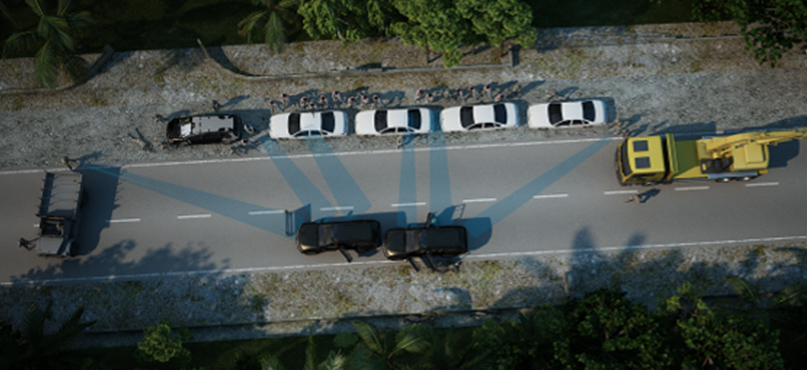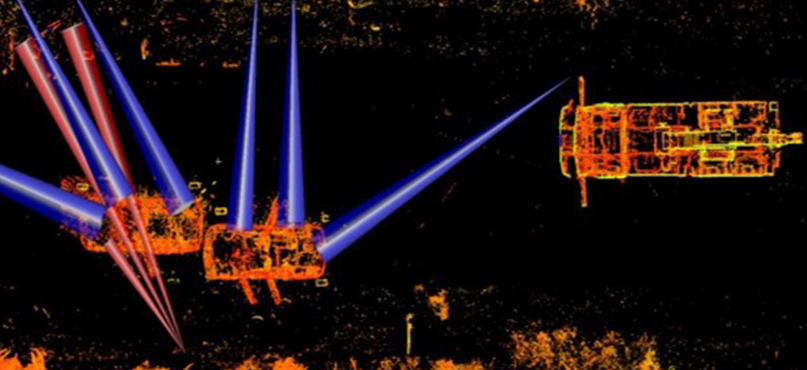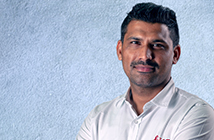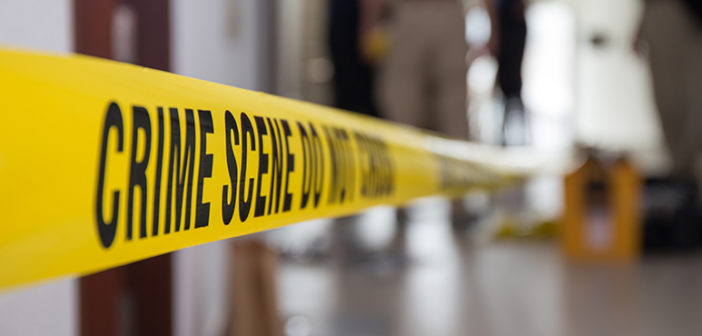This blog post comes from the webinar Digitising Crime Scenes for Better Visibility and Analysis. Watch the webinar here.
A suspicious vehicle flees from a crime scene and creates a dangerous situation for the public at large in the Philippines. Eventually barricaded by more than four dozen authorities, a shootout occurs, killing all the suspects in the vehicle. The Philippine police need to analyse the hundreds of bullets and identify the exact position of the perpetrators firing from inside the vehicle and the officers returning fire from behind the barricades.
 With 3D laser scanning technology, this real-world event was analysed with an unprecedented level of accuracy, providing the Philippine authorities with a clear understanding of the situation.
With 3D laser scanning technology, this real-world event was analysed with an unprecedented level of accuracy, providing the Philippine authorities with a clear understanding of the situation.
Historically, mapping crime scenes is tedious and painstaking work. A crime scene investigator needs to properly document the crime scene for evidence, as it can be too easy to miss a critical detail that can make or break the case. And, with court trials taking months to even years, evidence needs to be revisited much later after the crime takes place.

Digitally capturing evidence with today’s laser scanning technology, though, enables investigators, officers and other authorities to accurately and comprehensively collect all evidence without the fear of leaving anything behind. Evidence can be revisited at any time, and broken down to simply explain to non-experts, such as jury members, for a complete understanding of the events.
Using laser scanning technology, such as the Leica RTC360 3D laser scanner with Leica TruView point cloud visualisation software, for crime scene investigations, users can experience these top benefits:
- Collect data faster, more comprehensively
What used to take hours to measure with traditional methods can now take minutes with laser scanning. All evidence is collected quickly without missing any detail, and with standardised evidence collection, human error is minimised. - Map scenes safer, more efficiently
To thoroughly map an entire scene can now be done with one user, reducing the amount of people that can potentially contaminate evidence and create more hazardous situations, especially in busy roadways. - Revisit the scene of the crime anytime as it was
Frozen in time, 3D point clouds and imagery from laser scanning can be revisited months and even years after the crime. Bringing the scene to the courtroom, jurors can enter an immersive environment to best understand the facts. - Analyse from the point cloud
Ideal for bullet trajectory and blood spatter analysis, accurate measurements can be made directly inside the 3D point clouds. Respective positioning of evidence markers can easily be made, enabling you to calculate various factors of the scene. - Capture witness and authority points of view
First-hand accounts can be visualised to confirm or question testimony in court. Make compelling court presentations with completely accurate representations of what those on the scene encountered.
To learn more about how 3D laser scanning technology can support crime scene investigations, watch the webinar Digitising Crime Scenes for Better Visibility and Analysis here.
For more information on Leica Geosystems 3D laser scanning solutions, please contact us.

Dr. Satendra Kumar is an internationally renowned crime scene expert with 10+ years of experience at various police levels. His field experience is backed by a master’s and doctorate in forensic investigation. Currently working as the public safety segment manager for emerging markets and EMEA at Leica Geosystems and volunteering forensics advisor to the India Ministry of IT and Communication. He is experienced in conducting workshops, trainings, talks for public safety at Interpol and other international police organisations toward enabling state-of-art advance forensic technologies to crime scenes.














